Connectors For Electronics
Durable, user-friendly connectors used in gaming consoles, smartphones, laptops, and other connected devices continue to evolve as consumers become more entwined with technology.
If, like me, you are old enough to remember the birth of the computer games industry, you may remember what it was like getting to grips with this new technology. At the time, computers and gaming consoles were very much the preserve of the enthusiast, for whom learning how to use connectors was simply part of the mystique of being a gamer.
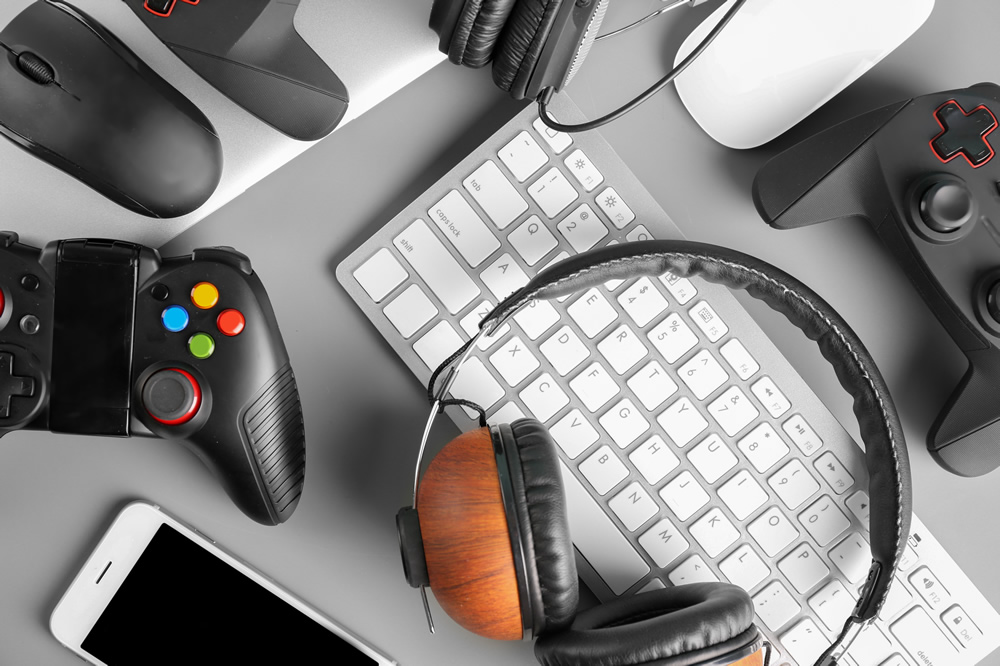
The world has moved on, and we now use connector technology every day. The use of connectors is no longer restricted to the enthusiasts. The video game industry generates more revenue than Hollywood, and widespread cell phone adoption is a global phenomenon with a huge reach. This means that almost everybody uses consumer connectors on a day-to-day basis.
The latest generation of electronic devices uses a range of connectors that have evolved in tandem with consumer electronics trends, which prioritize light weight, small package sizes, and user-friendliness. The miniature connectors in most consumer devices are a far cry from the clunky edge-card connectors of gaming consoles; it was necessary to blow onto those contacts to ensure that dust wouldn’t interfere with a secure connection. Today, consumers demand simplicity and reliability, and while there have been a few false starts, the current breed of connectors delivers high performance in easy-to-use packages.
Jack Connectors
The quarter-inch jack is one of the oldest connectors in the world, dating back at least 140 years. Still used in the audio industry, the quarter-inch jack is too large for today’s technology so most manufacturers use the 3.5 mm jack as the standard headphones socket.
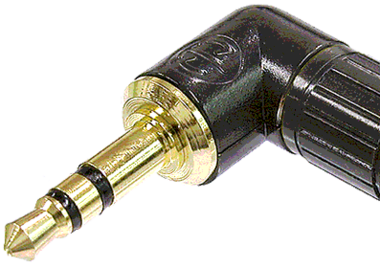
Neutrik’s 3.5 mm metal-bodied right-angle plug features chuck strain relief for cable retention in audio applications.
Despite its smaller size, the 3.5 mm jack shares the simple design of its larger cousin. This simplicity keeps the 3.5 mm jack in popular use today. Until the widespread introduction of wireless headphones, it was the only real choice for audio connection in the consumer market. Precision audio applications use high-quality plugs with gold plating, strain relief, and other features designed to enhance sound quality, durability, or ruggedness for outdoors and events applications.
The Rise of the USB Connector for Consumer Devices
One of the greatest innovations in consumer electronics connectors that has happened in the last quarter century was the introduction of the Universal Serial Bus (USB) connector. The USB connector, with its small size and characteristic rectangular design, was truly different when it arrived. It was designed to simplify the task of connecting computer peripherals by replacing a diverse array of other connectors that were popular in the personal computer market.
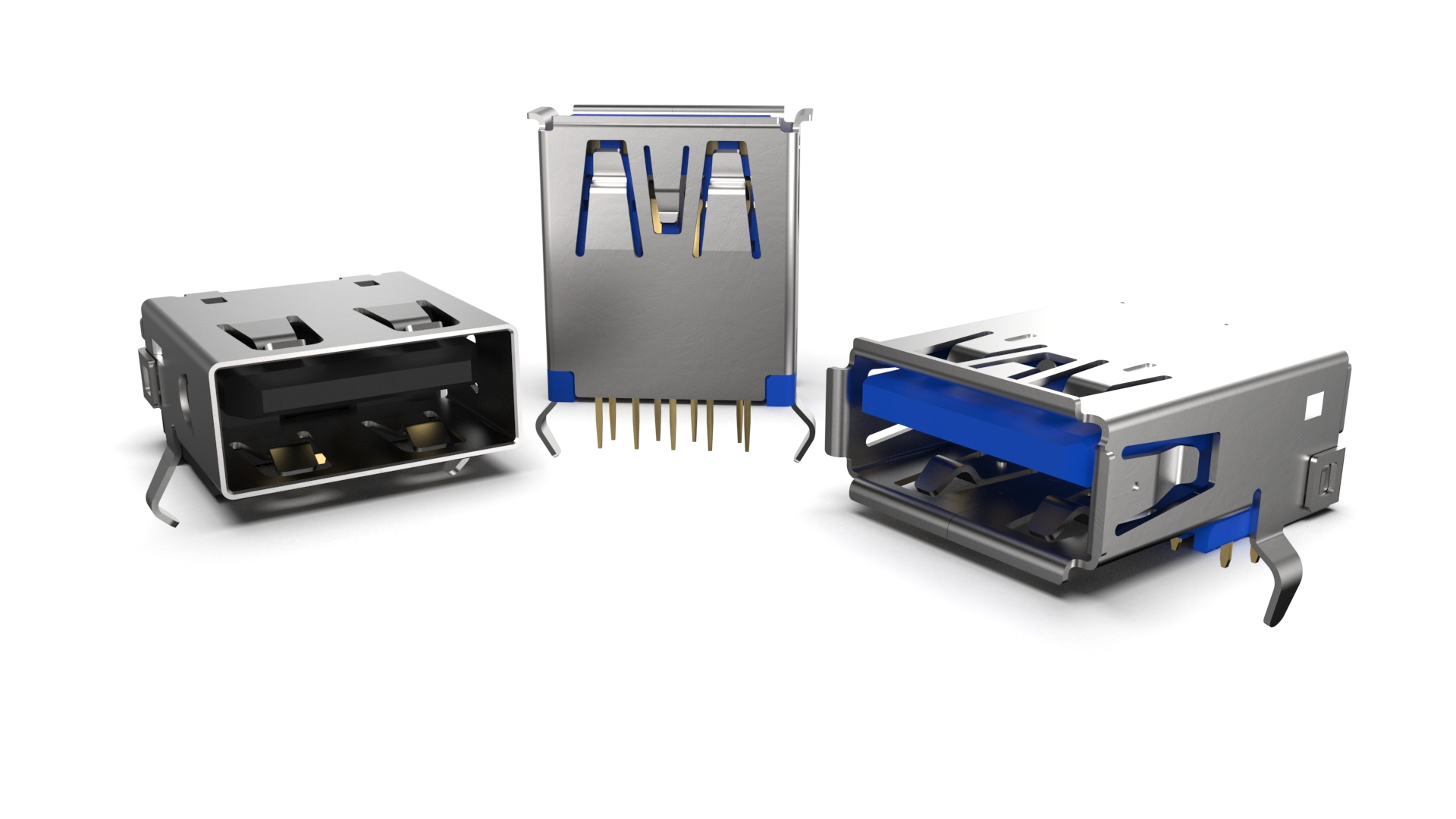
GCT’s latest two USB A connectors, the USB1130 and USB1135, feature extended mating cycles and enhanced current rating for fast-charging and high-traffic applications.
The USB connector rapidly replaced many of the products in common use, such as the circular DIN connectors used by keyboards and mice and the D connector employed for printers. The ease of use and universal appeal of the USB connector saw it quickly adopted by a whole host of other applications, from memory devices to gaming consoles. However, the original type-A connector is too large to be used in handheld devices, a requirement that is now filled by the mini- and micro-USB. These are used in a huge range of devices, including digital cameras, cell phone handsets and tablet computers. The development of sealed micro-USB connectors has even allowed them to branch out into new industries and markets.
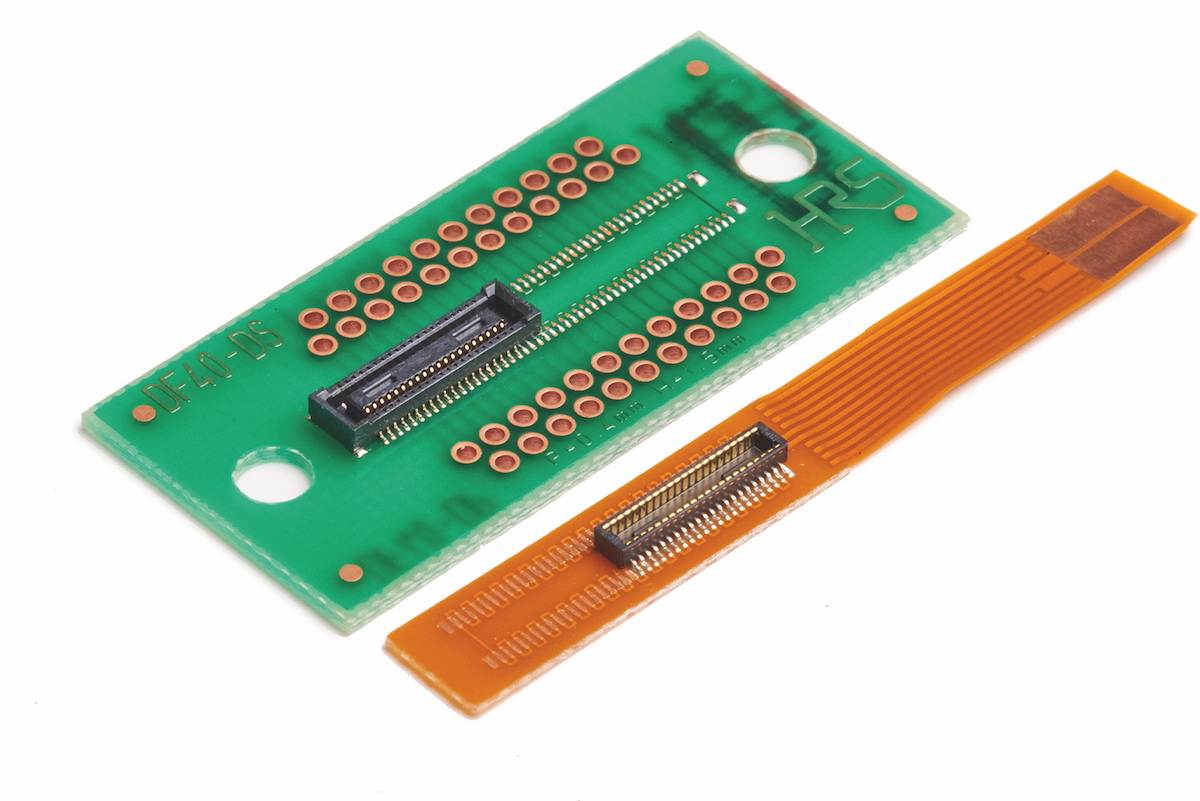
Hirose’s FPC-to-board/board-to-board connector series offers high-density mounting and space-savings, supporting USB4 Gen2 (10 Gb/s) transmission for portable electronic and consumer devices.
Consumer Connectors Connect Video
Despite its universal design, at least one area was not served by the early generations of USB connector: video. For many years, the computer industry used the VGA (video graphics array) connector in the form of the 15-way high-density D-Subminiature. With the emergence of high-definition video, the 15-way D-Sub was simply not suitable for the task. Although the DVI superseded the VGA connector, it was still large and cumbersome, and the high-definition multimedia interface (HDMI) is now common for video applications.
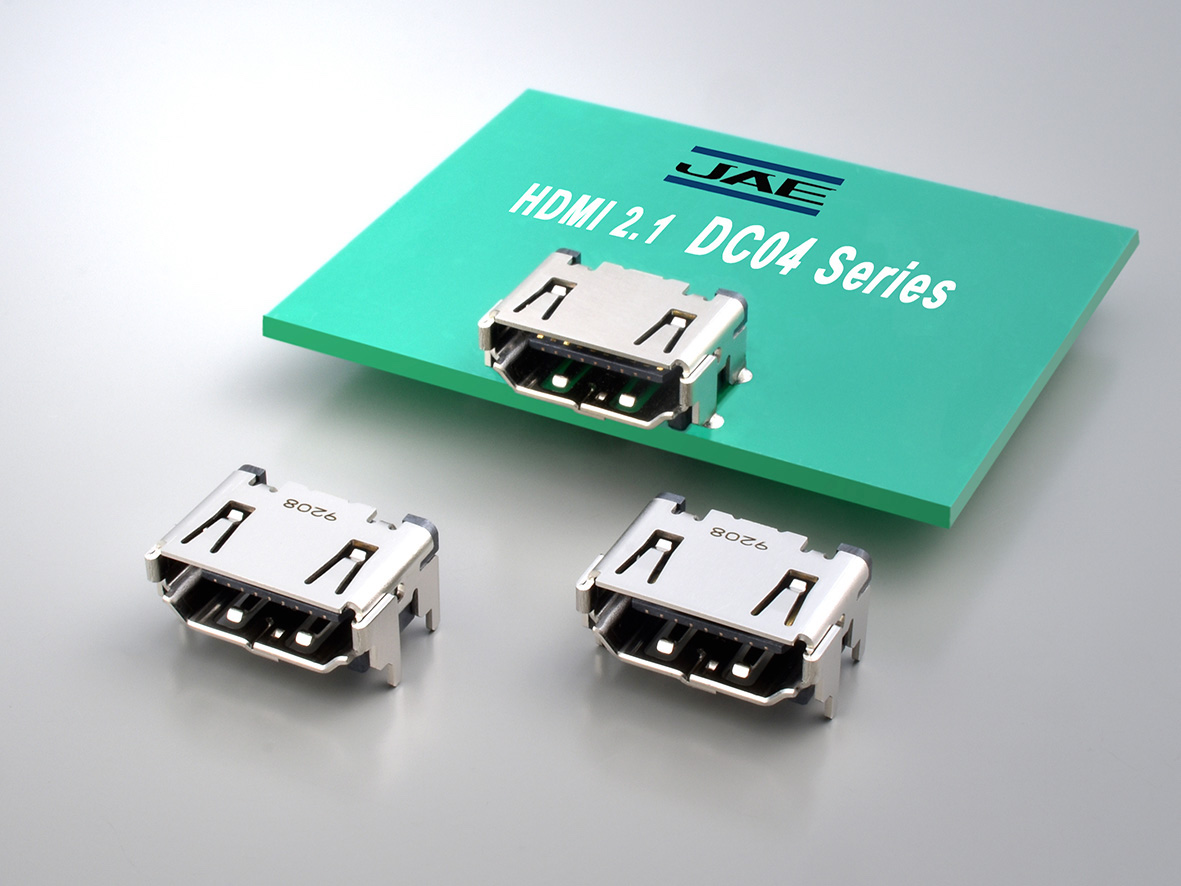
JAE Electronics DC04 Series HDMI connectors ensure stable, high-speed transmission in applications like televisions, monitors, projectors, digital cameras and video boards.
Despite the evolution of these connectors, only recently has a connector emerged that can fulfill all of the roles required for modern consumer electronics. The USB Type-C connector, also known as USB-C, was created as a truly universal connector. Designed to be slim enough for use in the latest cell phone handsets, the USB-C offers the simplicity of the 3.5 mm audio jack and the video capabilities of HDMI, while also delivering power of up to 100 watts.
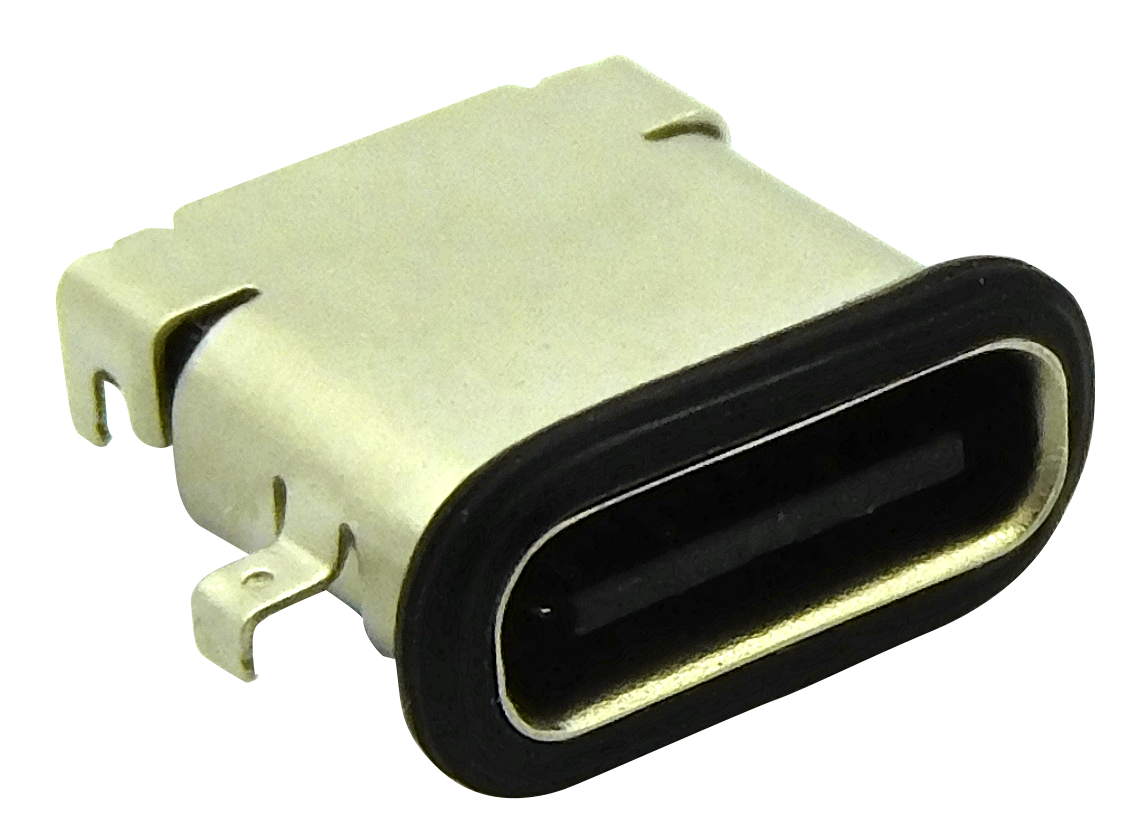
Stewart Connector’s new IP67-rated USB Type-C connectors are used in IoT applications where reliability and functionality are necessary when Ethernet moves outside typical office applications.
One Connector to Rule Them All
When first introduced, the USB-C was limited to high-specification devices. However, it has quickly become one of the most used and recognized connectors in consumer applications. Smartphones, game consoles and computer peripherals are all benefitting from the simplicity and user-friendly features of the USB-C, a testament to its clever design.
Just as the original USB Type-A connector has found advocates far beyond its intended audience, so too will the USB-C. With high mating-cycle performance and the development of waterproof versions of the USB-C that are sealed up to IP68, the USB-C will surely become a staple for industrial designers.
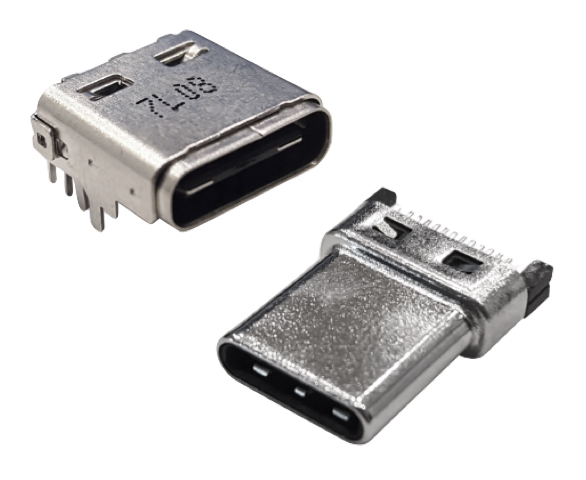
ACES Electronics offers a waterproof USB-C that can withstand the accidents, weather, and hard use consumers put their devices through.
Connectors in the consumer market need to perform several tasks. We all expect our electronics to be reliable and robust, but at the same time we do not have time to be connector experts. The products that we use day-to-day are the result of many years of development, there to ensure that our devices work whenever we need them.
Like this article? Check out our other Connector Basics, USB and New Technology articles, our Consumer Market Page, and our 2021 and 2020 Article Archives.
- Connectors For Electronics - June 29, 2021
- Modular Connector Solutions Enable Designers to Create Affordable Custom Connectors - April 27, 2021
- Sealed Connectors Protect Against the Hazards of the Transportation Industry - March 2, 2021

